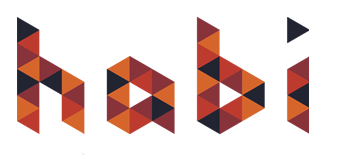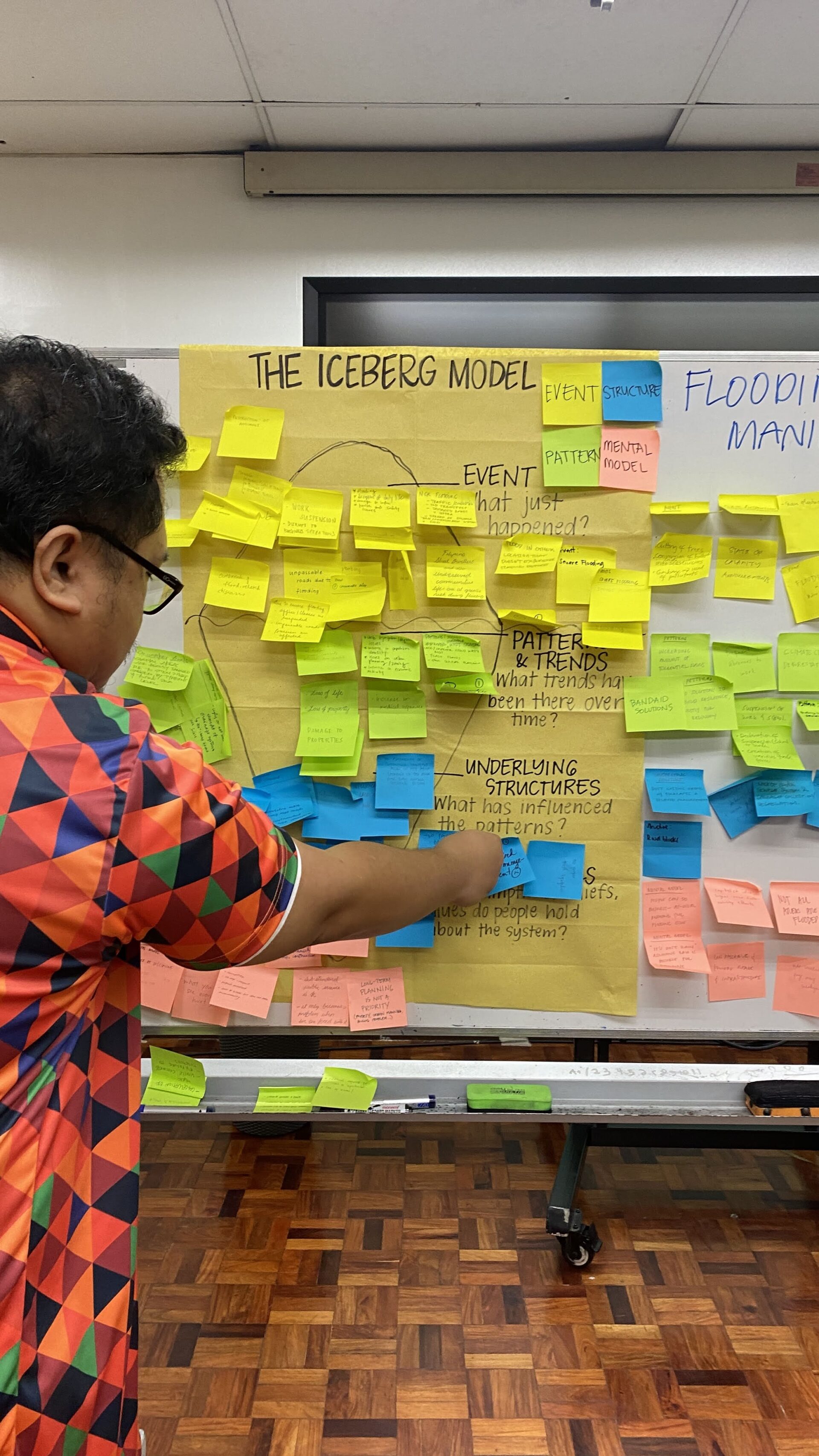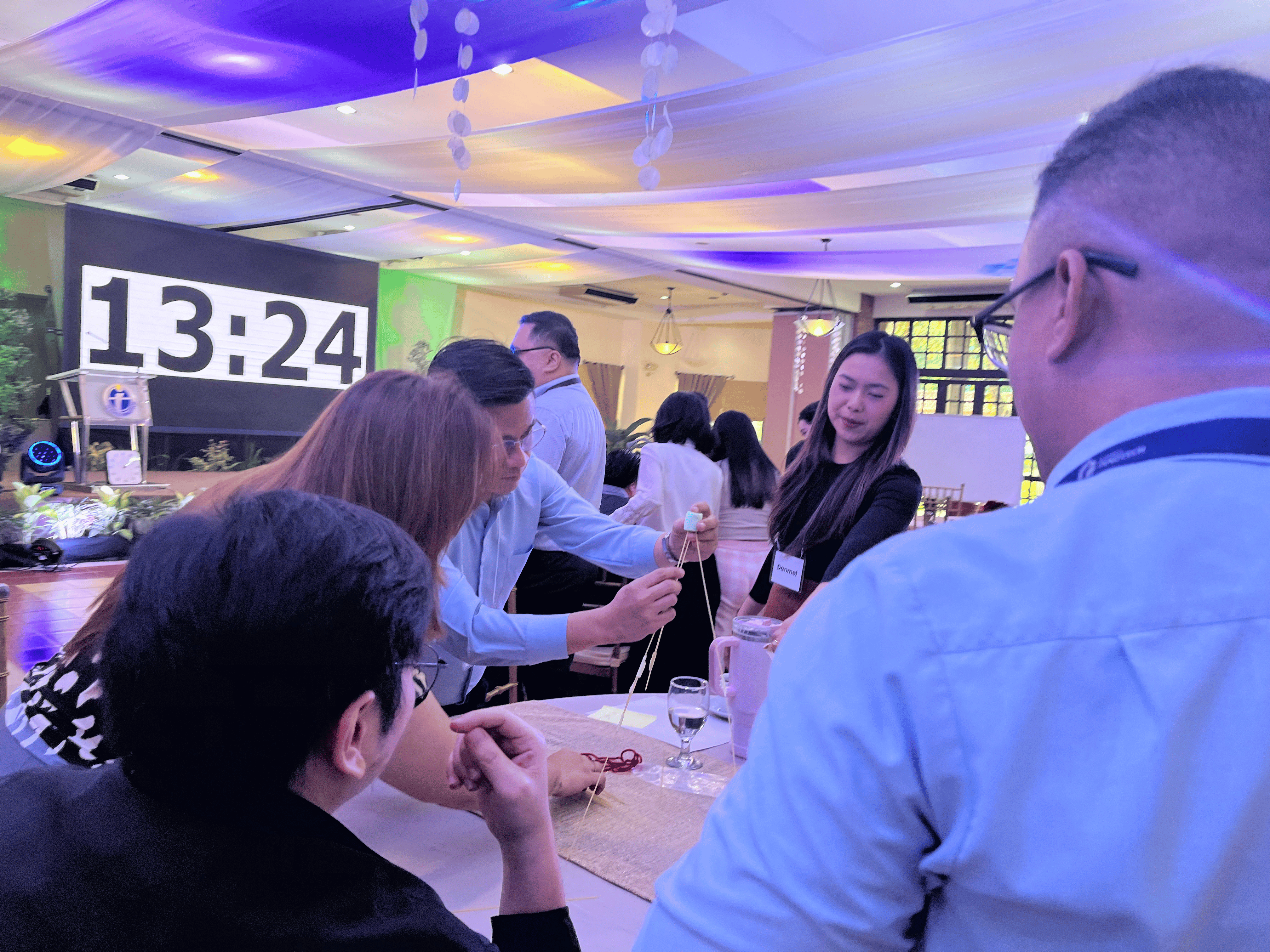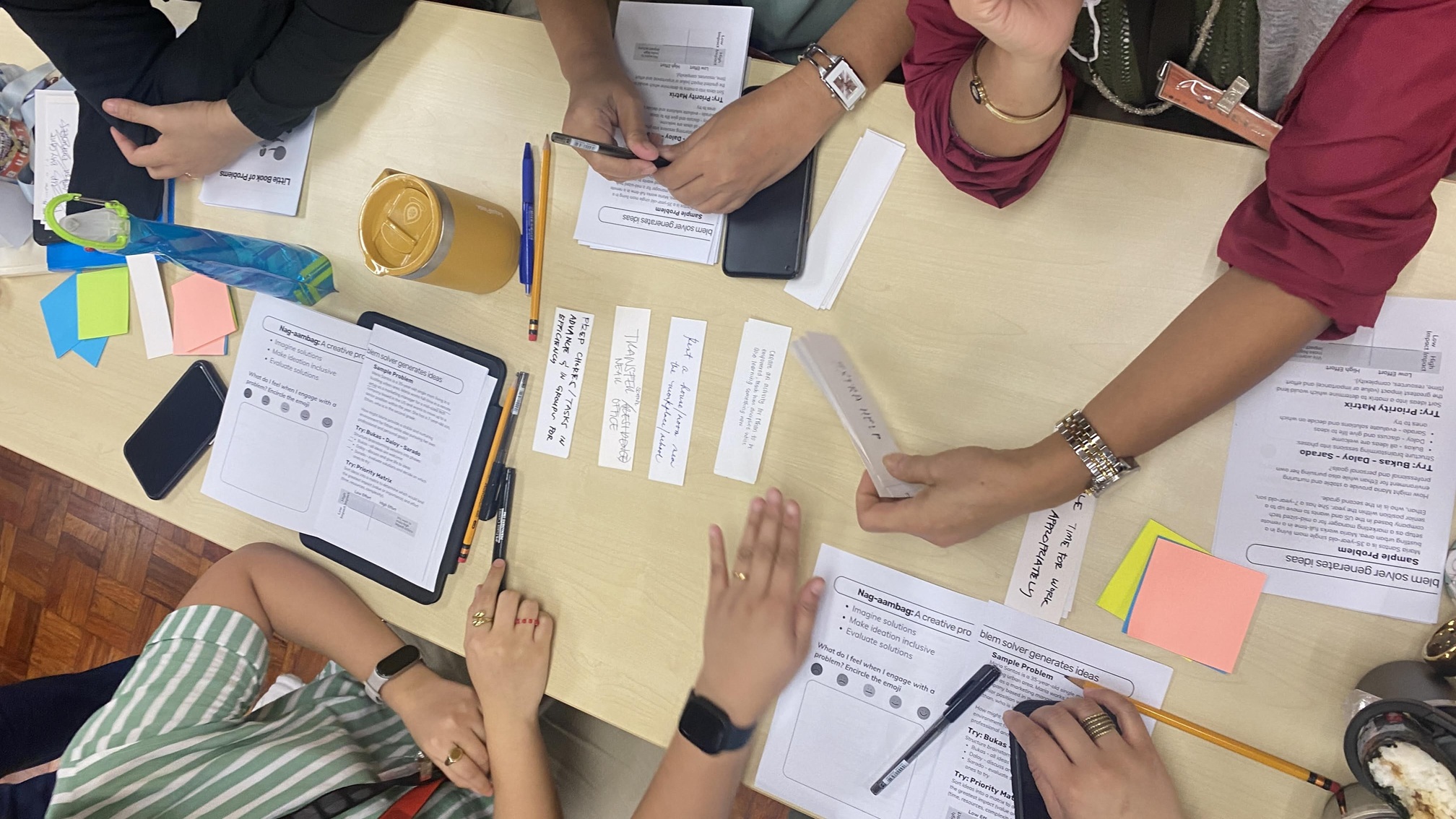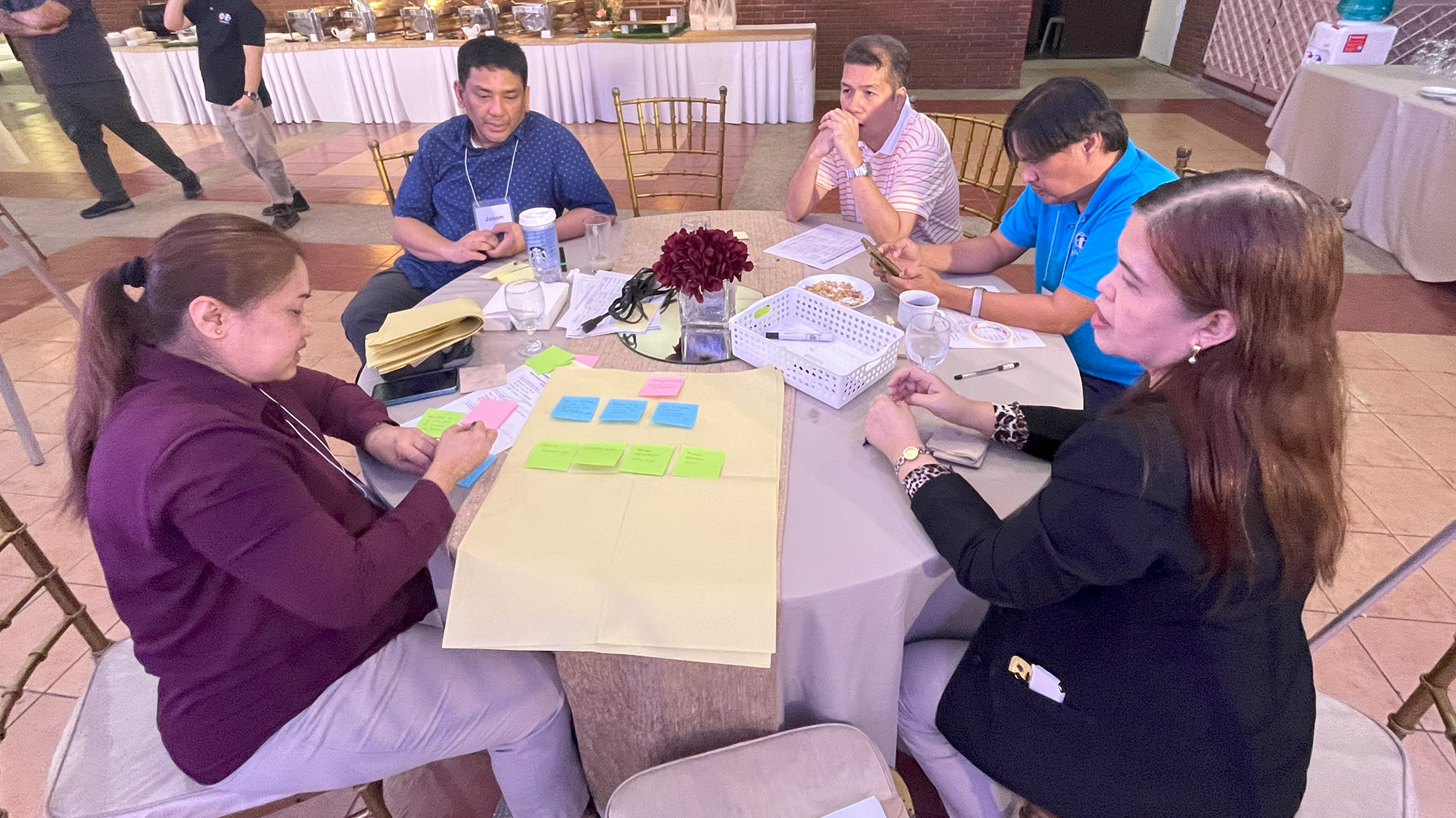In Habi, thinking about problem solving as a creative process and employing tools and strategies from the fields of design and management can help renew and reframe how we solve problems. Through our 1-day Creative Problem Solving Workshops, we were able to help the staff members of the Design Center of the Philippines and SEAMEO-INNOTECH, who were looking for new ways to solve the problems and challenges their organizations faced while also dealing with an evolving context.
Structured but flexible approach
Creative Problem Solving is a structured but flexible approach to problem solving that seeks to foster creativity, develop multiple and diverse perspectives, and eventually generate open-ended solutions that have room to be developed and improved. Referencing Habi’s design thinking framework, we encourage the participants to see problem-solving not as a linear process but as a set of actions. We believe that a creative problem solver:
We deepened our understanding of these different actions by exploring and practicing different tools and strategies, which provide opportunities for practicing empathy, collaboration, critical thinking and decision-making. After each exercise, we discuss the experience with participants and also ask them to reflect on how they personally felt with each action, so they know how best they can participate in creative problem solving.
Grounding in the context
Experiential learning is a key philosophy for us when designing learning experiences, especially for adult learners, so for these workshops, we made sure to ground the exercises using relatable practice problems and cases that are rooted in their context. For example, dealing with the impact and effects of having to physically move their office space, or addressing issues of work-life balance. This way, participants will have an easier time understanding the concepts and tools, practice using them within the workshop, and readily apply the lessons to their work right after the workshop.
No problem solver is an island
We wanted to emphasize the idea of problem solving as collaboration, and that we can use different tools and strategies that would allow people to be engaged in problem solving at different levels of capacity and involvement. We wanted to shift the idea that problem solving was an individual burden and into a shared opportunity for co-designed solutions.
Strengths-based approach
Unique to our run with SEAMEO-INNOTECH was connecting it to a previous workshop they had on discovering their individual and team strengths. Having a strengths-based approach gives additional nuance to the different actions of a creative problem solver, helping to maximize what individuals and teams are already good at and bringing that into problem solving actions and processes.
The participants not only found the workshop to be useful for their individual line of work, but helpful for the organization to work on challenges and initiatives moving forward. Participants from the SEAMEO-INNOTECH run in particular found the process and exercises useful for their five-year development planning sessions, and were excited to carry it out for the next few months.
(The workshop) Helped me realize that aside from finding solutions, finding the right problems to solve is an equally important aspect in problem-solving.
The workshops also helped empower the participants to feel more confident about engaging and contributing to problem solving activities, and also gave them new approaches and avenues for participation.
Mas naging effective since everyone has the voice to share and input their ideas.
